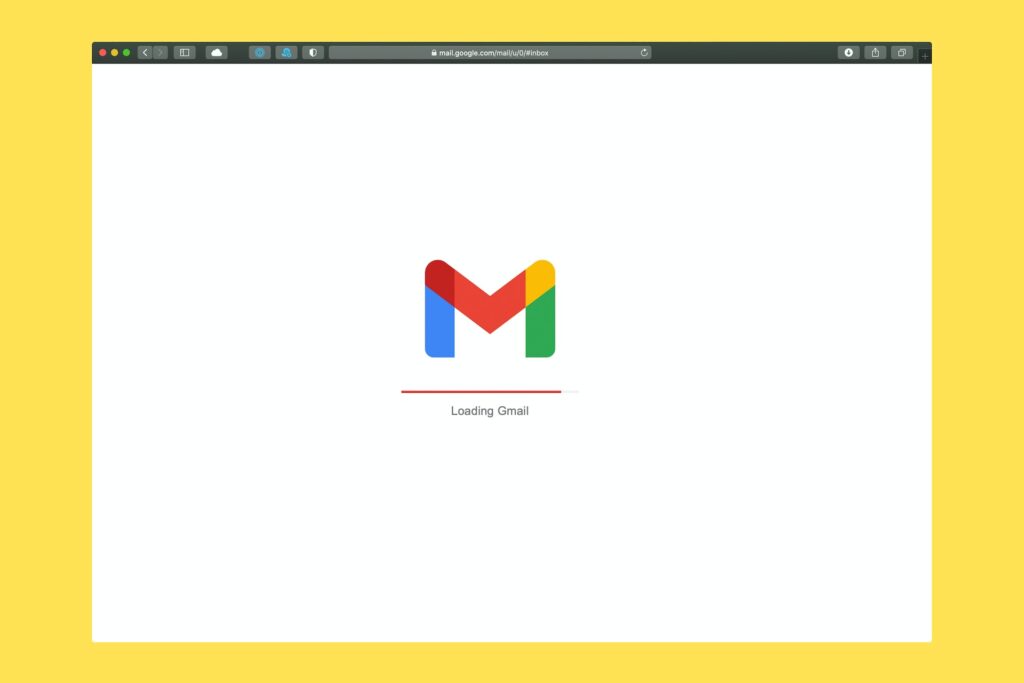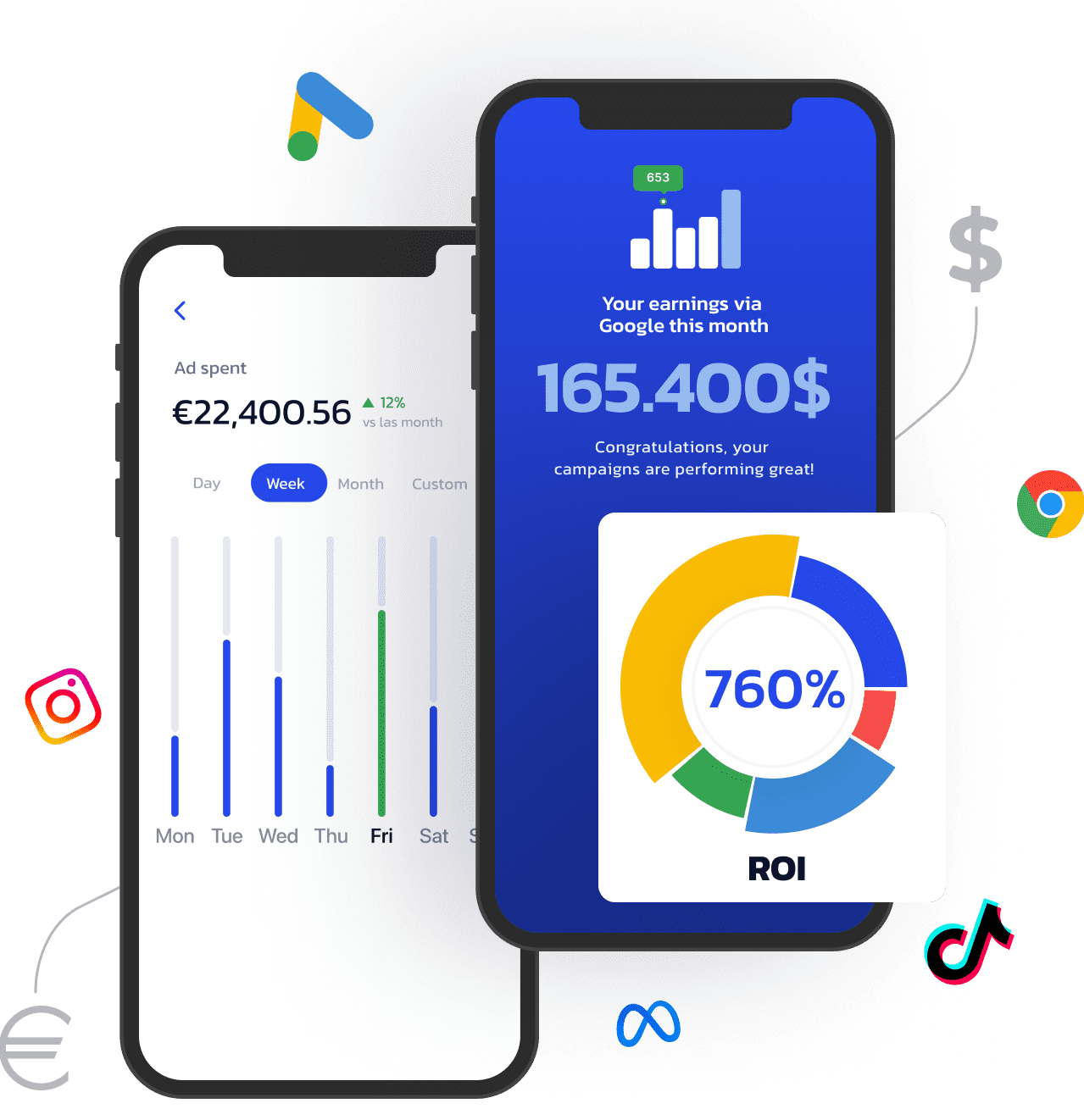Table of contents
Welcome to our article on the most important KPIs in email marketing. In this article, we will explore the most important KPIs (Key Performance Indicators) for email marketing campaigns. Whether you're a business owner, a marketer, or just someone who wants to know how successful their email marketing efforts are, this article is for you!
What are KPIs in email marketing?
KPIs, or Key Performance Indicators, are measurable values that provide information about the performance and effectiveness of a marketing campaign. In email marketing, KPIs serve as a guide to evaluate and optimize the success or failure of your efforts.
The importance of email marketing metrics
Email marketing is still one of the most effective ways to reach your target audience. The right KPIs help you understand how well you're reaching your target audience and whether your message is getting through.
Open rate: How many people open your emails?
Open rate is one of the simplest but crucial KPIs in email marketing. It indicates how many recipients have opened your newsletters. A high open rate shows that your subject lines are engaging and relevant.
The open rate is calculated by multiplying the number of opened emails by the number of delivered emails and multiplying the result by 100. To improve the open rate, you should use engaging and relevant subject lines that pique the interest of your recipients. Segmenting your list is also helpful to send tailored content to specific audiences.
The open rate is an important metric to evaluate the effectiveness of your newsletter campaigns. A good value for the open rate is usually between 20% and 30%. An open rate above 30% indicates a particularly appealing subject line and relevant content. However, if your open rate is below 20%, you should review your subject lines and content to ensure that they better capture your recipients' attention.
Click-through rate: How many people interact with your links?
The click-through rate measures how many recipients clicked on a link after opening your email. A high click-through rate shows that your content is engaging and moves readers to action.
To increase click-through rates, place clear and eye-catching call-to-actions (CTAs) and make sure your content is relevant and engaging. A/B testing your newsletters can help you identify the elements that best motivate your recipients to take action.
The click-through rate is an important indicator of the interest and relevance of your email content. A good click-through rate is usually between 2% and 5%. A click-through rate above 5% indicates that your content motivates readers to take action. If your click-through rate is below 2%, you should optimize your content and CTA buttons to achieve a higher interaction.
Conversion rate: How many recipients perform the desired action?
The conversion rate indicates how many recipients have taken the desired action after opening your email, be it a purchase, registration or download. A high conversion rate means that your newsletter is successfully converted into a customer action.
The conversion rate is calculated by dividing the number of recipients who performed the desired action (e.g. purchase, registration) by the number of emails sent and multiplying by 100. A well-designed landing page and an attractive CTA in the email can positively influence the conversion rate.
Conversion rate is one of the most important metrics, as it indicates how effective your emails are at getting your recipients to take action. A good conversion rate varies by industry, but is often between 2% and 5%. A conversion rate above 5% indicates a compelling email and a well-designed landing page. If your conversion rate is below 2%, you should optimize your content and conversion path to generate more conversions.

Bounce rate: What is the bounce rate?
The bounce rate indicates how many newsletters could not be delivered. There are two types of bounces: hard bounces, which indicate a permanently invalid address, and soft bounces, which indicate temporary delivery problems. A high bounce rate indicates that you should optimize your mailing list.
The bounce rate is the ratio of undelivered emails to the total number of emails sent multiplied by 100. A low bounce rate is desirable because it shows that your emails are being delivered successfully. Ideally, your bounce rate should be below 2%. A bounce rate above 2% could indicate that your distribution list is outdated or of poor quality.
To reduce the bounce rate, it is important to clean your email list regularly to remove outdated or invalid addresses. Also, it is advisable to use double opt-in methods to ensure that your list contains high-quality subscribers.
Unsubscribe rate: Why do subscribers unsubscribe?
The unsubscribe rate indicates how many recipients have unsubscribed from your email list. A certain unsubscribe rate is normal, but if it's excessive, you may want to review your content or your sending frequency.
The unsubscribe rate is the number of unsubscribes divided by the number of emails delivered multiplied by 100. Some unsubscribe rate is normal, but to reduce it, make your content more relevant and interesting. Make sure your subscribers have the option to adjust their email preferences instead of unsubscribing directly. Also, provide clear value to retain your subscribers, for example, through exclusive offers or informative content.
An unsubscribe rate of less than 1% is usually acceptable. However, if your unsubscribe rate is above 1%, you should investigate the reasons. Perhaps your content is no longer relevant or you're sending emails too frequently. Pay attention to your subscribers' preferences and give them the option to adjust their email settings to reduce the unsubscribe rate.
Subscriber growth rate: How fast is your list growing?
Subscriber growth rate measures how fast your mailing list is growing. A steadily growing number of subscribers is a good sign that your marketing efforts are successful and your content is appreciated by recipients.
The subscriber growth rate is calculated by dividing the number of new subscribers acquired by the total number of subscribers at the beginning of the year and multiplying by 100. A high growth rate is a sign that your marketing efforts have been successful. To grow your subscriber list, you can offer incentives such as discounts for new subscribers or participation in sweepstakes.
A growth rate of 5% or more per month is a positive sign of a successful email marketing strategy. A growth rate of less than 5% may indicate that you need to improve your acquisition efforts to gain new subscribers. Use incentives and strategies to increase your subscriber growth and continually grow your email list.
ROI (Return on Investment) for Email Marketing
ROI in email marketing indicates how profitable your campaigns are. It shows how much profit you make in relation to the costs invested. A positive ROI is the goal of every marketing campaign.
ROI in email marketing is an important metric that measures the financial success of your campaigns. To calculate ROI, subtract the cost of your email marketing campaign from the revenue generated and divide the result by the cost. Multiply the result by 100 to get the ROI as a percentage. A positive ROI means that your newsletter campaign generated more revenue than it cost. To improve ROI, you can optimize your spend, provide personalized and relevant content to increase conversion rates, and improve your list segmentation to send more targeted offers.
Conversion Funnel: The journey of your subscribers
The conversion funnel describes the steps a subscriber goes through before taking a desired action. This understanding helps you identify and optimize bottlenecks in your marketing process.
The conversion funnel visualizes the steps your subscribers go through before taking a desired action. To optimize the conversion funnel, analyze each step of the process and identify potential bottlenecks or obstacles that can impact conversion rates. Improve the content and design of your emails and landing pages to make the customer journey seamless and engaging. Test different CTAs and offers to see which ones deliver the best results. Effective email automation also allows you to send relevant messages based on your subscribers' behavior, optimizing the conversion funnel.
Churn rate: understanding customer churn
The churn rate measures how many customers leave your company over time. A low churn rate is a sign of good customer retention and strong brand loyalty.
The churn rate measures how many customers leave your company over time. To calculate the churn rate, divide the number of customers who churned in a given period by the total number of customers at the beginning of the period and multiply the result by 100. A low churn rate is desirable because it indicates strong customer retention and satisfaction. To lower the churn rate, it is important to understand the reasons why customers leave. Gather feedback, provide personalized offers, and improve customer service to strengthen customer loyalty and lower the churn rate.
Conclusion
Monitoring and analyzing the right email marketing KPIs is critical to understanding and improving the success of your newsletter campaigns. The various KPIs provide valuable insights into the performance of your email marketing and help you evaluate the effectiveness of your campaigns, identify bottlenecks and continuously optimize your strategies.
By keeping an eye on these metrics and working specifically on optimizing your email marketing strategy, you can continuously improve your campaigns and build effective and targeted communication with your audience. Use the insights from the KPIs to improve your email content, CTAs, segmentation, and automation strategies. Stay on top of newsletter marketing best practices and adapt your tactics to meet the needs of your recipients. This will help you develop a successful long-term email marketing strategy that meets both your marketing goals and the needs of your target audience.
Frequently asked questions
What does KPI mean?
KPI stands for Key Performance Indicator. These are measurable values that evaluate the performance of a marketing campaign.
Which newsletter KPIs are particularly important?
In email marketing, open rate, click rate, conversion rate, bounce rate and unsubscribe rate are crucial KPIs that influence the success of your campaigns.
How can I increase my open rate?
An appealing subject line and relevant content can increase the open rate of your emails. Make sure your emails are personalized and tailored to the needs of your target audience.
Why is customer lifetime value important?
Customer Lifetime Value shows you how valuable a customer is to your company in the long term. It helps you identify loyal customers and build long-term relationships.
How often should I send emails?
The shipping frequency depends on your target audience and your offer. A/B test different frequencies to see what works best for your subscribers.
How often should I clean up my newsletter list?
It is recommended to clean your email list every few months to remove inactive or invalid email addresses. A clean list improves deliverability and increases retention rates.
What is a good open rate?
The average open rate in newsletter marketing varies by industry, but is often between 15% and 25%. A good value depends on your target audience and campaign goals. Try to continuously improve your open rate.
How do I increase my click-through rate?
An appealing design for your emails, a clear call-to-action (CTA), and relevant content can increase your click-through rate. Also, test different CTA placements and colors to get the best performance.
What types of emails can I automate?
You can automate different types of emails, including welcome newsletters, birthday greetings, follow-up emails after a purchase, and abandoned cart reminders.
How can I measure the success of my email campaigns?
Use KPIs such as open rate, click rate, conversion rate, and ROI to measure the success of your newsletter campaigns. Analyze your data regularly to identify areas for improvement and optimize your campaigns.






